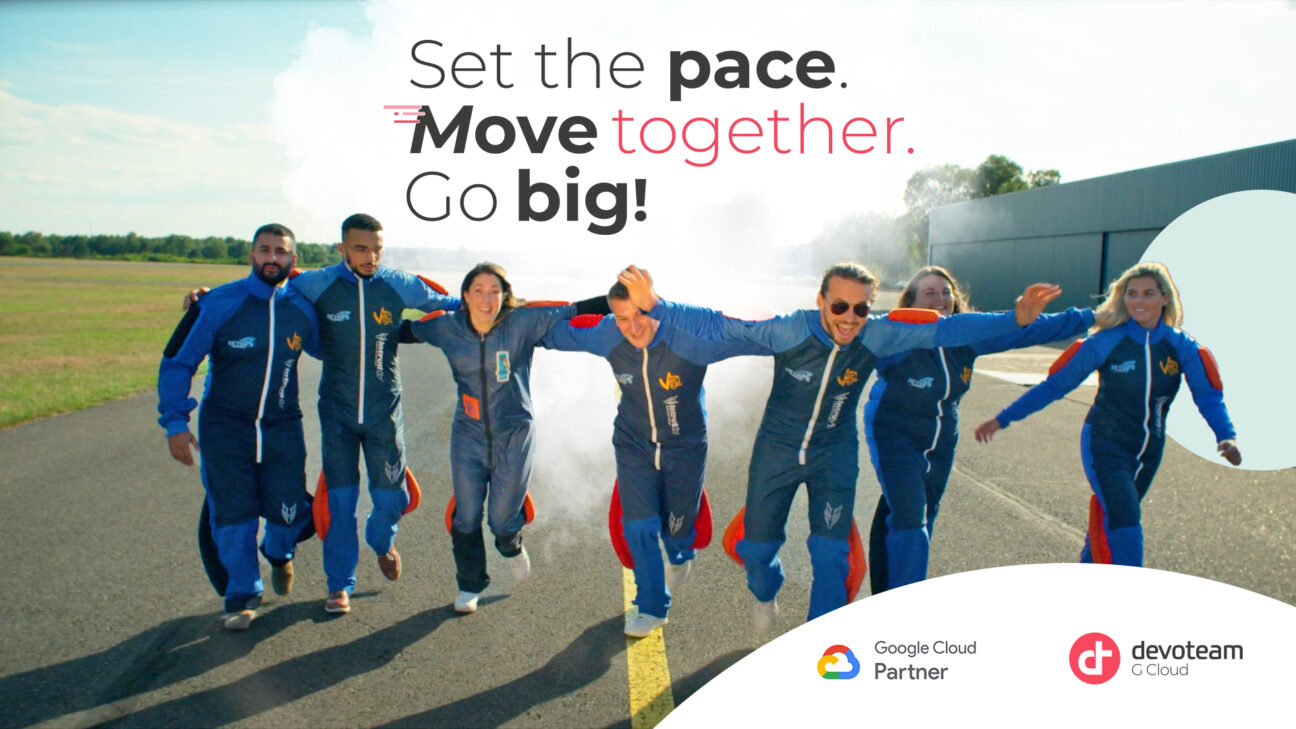In this series, we’ll put the spotlight on Devoteam G Cloud’s experts who are always at the forefront of driving progress in the exciting and rapidly evolving Google Cloud world. Today we introduce Attila Erdei, the Lead Data & AI Architect for Devoteam G Cloud UK. In this article, you’ll meet Attila as he shares his experiences and insights into bridging the gap between business needs and technical solutions, providing valuable expertise in the field of Data Architecture.

My name is Attila, and I am the Lead Data & AI Architect at Devoteam G Cloud UK.
With years of experience and a passion for computers that runs deep, I help to bridge the gap between business needs and the technical solutions that will drive success.
From the very beginning, my passion for computers ignited a journey that has spanned over two decades, from the days of childhood curiosity to the current realm of cutting-edge technology. As the years unfolded, I eagerly pursued studying and working with computers, relentlessly expanding my knowledge and honing my skills.
After completing my university education, I embarked on a new adventure, relocating to the vibrant tech hub of the UK. This is where my story in tech began!
How Support and Development set me up for Architecture
Having begun with a support background, transitioning to development, and ultimately landing in architecture has been tremendously beneficial. When designing solutions, I approach them with a developer’s mindset. Simultaneously, I understand the significance of considering the support aspect. Simply producing elegant code is not productive if it cannot be effectively operated. This has allowed me to gain practical experience in project planning from a development standpoint.
A Data Architect’s Evolution: Background & Career Progression
I graduated from Szechenyi Istvan University in Hungary back in 2011, where I earned my degree in IT Engineering. Next, I gained a position as Local IT Support for Chessington World of Adventures and from there two years later I moved into the IT head office into an Application Support Position. I was looking after revenue generating systems around the globe and from there. As my career progressed, I kept a strong interest in data and made a change towards working with reporting sites. Eventually, becoming a SQL Database Developer, this opened up exciting opportunities for me to explore the world of data.
The Journey to Data
This journey has spanned over 20 years from childhood to adulthood. After graduating from university and relocating to the UK, I secured a position as an IT support professional. Within a brief two-year period, I transitioned to the head office, assuming a role in application support. As my career progressed I ventured into data management. This progression eventually presented me with the chance to become an architect.
Later on I moved on to a marketing automation agency, with the chance to become a Cloud Architect. Starting from a support background, my career path took me on a journey of development and eventually architecture, which has given me a development mindset whenever I approached a solution. This progression has been really valuable in creating robust and effective systems by considering both the development and support perspectives.
The best thing about my job is the amount of access I have to real life questions, issues, and pain points, where I have to find the right answer for a variety of problems and a variety of clients
The role of an Architect in understanding Business and Technical Requirements:
As a Data and AI architect, a significant part of my role revolves around understanding and gathering business requirements. Bridging the gap between the client’s needs and the technical solutions requires a deep understanding of both domains. This involves evaluating different approaches and identifying the best technologies and strategies to implement.
My way of Navigating Client Expectations:
It is crucial to truly understand the motivations and desired outcomes of our clients, and offer a range of solutions that could meet their needs. However, the final decision rests with the client. My goal is to guide them towards achieving their objectives while ensuring they are aware of all available options.
A Case Study: Implementing a Governance Tool for a Large UK Retailer:
Allow me to share an exciting project I am currently working on: the implementation of a governance tool for a large UK retailer. The client’s problem was that they did not have the capability to be able to track user behaviour in regards to data access and data movement within the organisation. In this project, we had a look at what their requirements were, and what it was they were aiming to achieve. Then we had to map out the capabilities of Google Cloud that align with the client’s requirements and effectively manage their expectations.
So, they had an idea of having a tool that could recommend the absolute best outcomes. That’s more of an AI project, rather than the governance tool itself. We excluded that work from the scope and started it as a separate project.
It’s definitely interesting to see how these companies actually operate and meet with the actual people who are running the business
We took the time to carefully go through their requirements and wishes, making sure they are clear with what’s actually achievable in the real world and within the project’s limitations, such as the budget. Furthermore, once we were all on the same page about the core functionalities to deliver, that’s when we put together the project plan. We got down into the nitty-gritty details: How can we actually access their data and metadata? What info is important to them, what they want to see and what do they not want to see?
Through collaboration and iterative processes, we are on track to exceed the client’s expectations, overcoming challenges and delivering a solution with immense potential.
Facing Challenges:
Working in a fast-paced environment presents its own set of challenges. One such challenge of a fast paced environment, is gathering all the necessary requirements before a project kicks off. To overcome this, proactive communication and collaboration with clients and technical teams are vital. I vividly recall where a customer had exceptionally high expectations but when they saw the final product we delivered, they were genuinely delighted and recognized its immense potential. Positive feedback, especially in a situation like this, serves as a strong source of encouragement for the entire team.
Continuous Learning:
Staying ahead in the ever-evolving field of data architecture requires continuous engagement in reading, training, conferences, and certifications. Currently, I am proud to hold five Google Certifications. Above all, collaboration with the technical team is also key to aligning client needs with the best technical possibilities.
The Importance of Devoteam G Cloud:
The G Cloud team at Devoteam possesses invaluable knowledge and expertise. For example, our cross-cutting nature enables collaboration and knowledge sharing across different countries and specialisations. In the UK team, we foster a startup culture that encourages closer collaboration, innovation, and camaraderie.
My Story Summed Up:
My job is essentially the link between the business needs and how we can deliver them
My journey from an IT support professional to an architect has been shaped by the diverse roles and experiences I’ve encountered. Understanding business and technical requirements, navigating client expectations, and implementing solutions that exceed expectations have been central to my career. Challenges in a fast-paced environment have taught me the importance of proactive communication and collaboration. Thus, continuous learning, both independently and through collaboration with the technical team, has been vital.
In conclusion, at Devoteam G Cloud, I’ve found a supportive and knowledgeable team that enables growth both as an individual and as part of a dynamic team.

Ready, set, join
Attila’s story serves as an illustration of the limitless potential of Google cloud and the infinite opportunities available at Devoteam G Cloud for those who are eager to learn and grow. Are you interested in Data, AI and Google Cloud? Now is the time to take the next step. Join the team today and start your own journey to success!